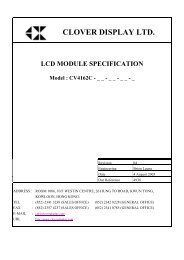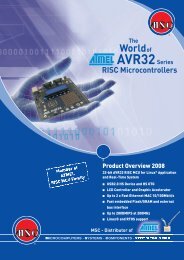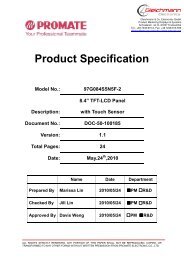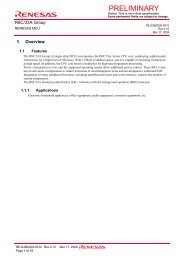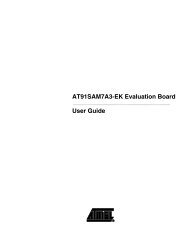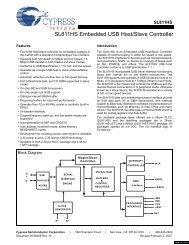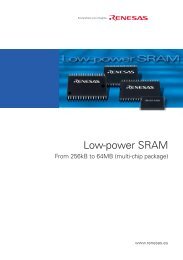ATmega8(L)
ATmega8(L)
ATmega8(L)
Create successful ePaper yourself
Turn your PDF publications into a flip-book with our unique Google optimized e-Paper software.
<strong>ATmega8</strong>(L)Pin DescriptionsVCCGNDPort B (PB7..PB0)XTAL1/XTAL2/TOSC1/TOSC2Port C (PC5..PC0)PC6/RESETPort D (PD7..PD0)RESETDigital supply voltage.Ground.Port B is an 8-bit bi-directional I/O port with internal pull-up resistors (selected for each bit). ThePort B output buffers have symmetrical drive characteristics with both high sink and sourcecapability. As inputs, Port B pins that are externally pulled low will source current if the pull-upresistors are activated. The Port B pins are tri-stated when a reset condition becomes active,even if the clock is not running.Depending on the clock selection fuse settings, PB6 can be used as input to the inverting Oscillatoramplifier and input to the internal clock operating circuit.Depending on the clock selection fuse settings, PB7 can be used as output from the invertingOscillator amplifier.If the Internal Calibrated RC Oscillator is used as chip clock source, PB7..6 is used as TOSC2..1input for the Asynchronous Timer/Counter2 if the AS2 bit in ASSR is set.The various special features of Port B are elaborated in “Alternate Functions of Port B” on page58 and “System Clock and Clock Options” on page 25.Port C is an 7-bit bi-directional I/O port with internal pull-up resistors (selected for each bit). ThePort C output buffers have symmetrical drive characteristics with both high sink and sourcecapability. As inputs, Port C pins that are externally pulled low will source current if the pull-upresistors are activated. The Port C pins are tri-stated when a reset condition becomes active,even if the clock is not running.If the RSTDISBL Fuse is programmed, PC6 is used as an I/O pin. Note that the electrical characteristicsof PC6 differ from those of the other pins of Port C.If the RSTDISBL Fuse is unprogrammed, PC6 is used as a Reset input. A low level on this pinfor longer than the minimum pulse length will generate a Reset, even if the clock is not running.The minimum pulse length is given in Table 15 on page 38. Shorter pulses are not guaranteed togenerate a Reset.The various special features of Port C are elaborated on page 61.Port D is an 8-bit bi-directional I/O port with internal pull-up resistors (selected for each bit). ThePort D output buffers have symmetrical drive characteristics with both high sink and sourcecapability. As inputs, Port D pins that are externally pulled low will source current if the pull-upresistors are activated. The Port D pins are tri-stated when a reset condition becomes active,even if the clock is not running.Port D also serves the functions of various special features of the <strong>ATmega8</strong> as listed on page63.Reset input. A low level on this pin for longer than the minimum pulse length will generate areset, even if the clock is not running. The minimum pulse length is given in Table 15 on page38. Shorter pulses are not guaranteed to generate a reset.2486SS–AVR–08/075



